Table of Contents
ToggleThe first thing you need to decide when planning your Kenya safari holiday is where you want to go. Kenya is a vast country, covering around 225,000 square miles (582,000 square kilometers). Within that there are 23 national parks as well as a host of other wildlife game reserves, wildlife sanctuaries, marine parks and private conservancies. Thus, you are really spoiled for choice when it comes to choosing the best places to visit in Kenya on your safari tour
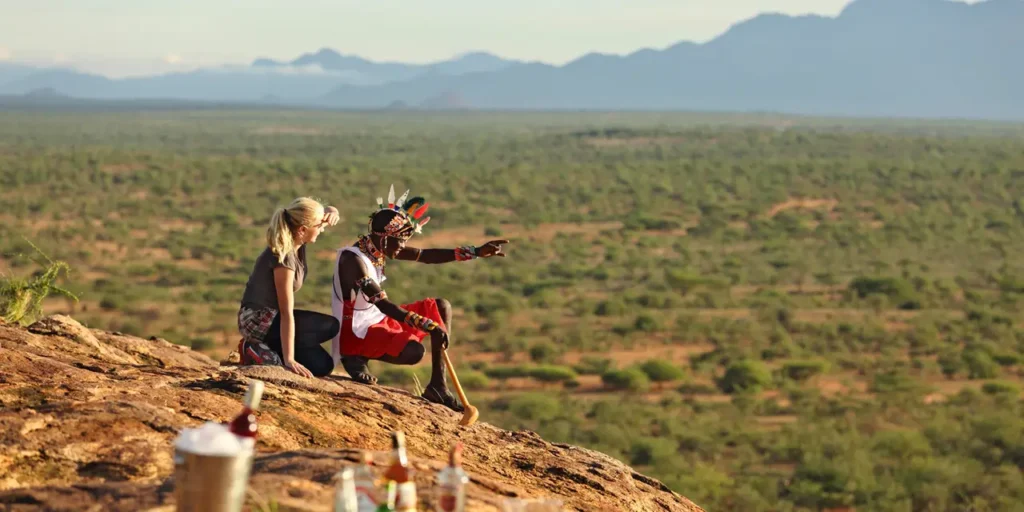
National Park, Reserve or Conservancy?
Before i list some of the best places to visit in Kenya, let me give you a quick word on the differences between national parks, national reserves and conservancies.
This is very important to know when planning your safari in Kenya because the rules and experience will differ depending on where you go.
1. National Parks in Kenya
Kenya National parks, like the Lake Nakuru, Amboseli and Tsavo, are government-managed areas. These places are aimed at preserving ecosystems and wildlife.
This is public land and no one is allowed to live here. Tourism and research are the only permitted activities here. Visitors must follow strict rules and regulations such as no off-road driving. Anyone can visit or drive around in the Kenya National Parks, including those on day trips, and you are only allowed to camp in designated campsites.
2. National Reserves in Kenya
Kenya National reserves are comparable to National Parks. This is community land. But it the land is managed by the county government and Kenya Wildlife Service (KWS). The main point of the Kenya national reserves is also to conserve wildlife.
However, some human activities are allowed in the reserves, such as managed use of some natural resources and controlled grazing of livestock.
3. Conservancies in Kenya
Kenya’s Conservancies are community land, or private land managed in partnership with local communities. While still a wildlife reserve, local people living in the area are also allowed to use the land in a managed way – and a portion of the money from tourism activities goes back into the local community. Since the area is free from the control of the government there are fewer rules, and activities like walking safaris, night game drives, and off-road driving are permitted.
Many conservancies don’t allow those on day trips which mean you will get a more private and intimate safari experience if you stay in a conservancy. However, because of their exclusivity, it typically costs more to stay in a conservancy than around one of the National Parks.
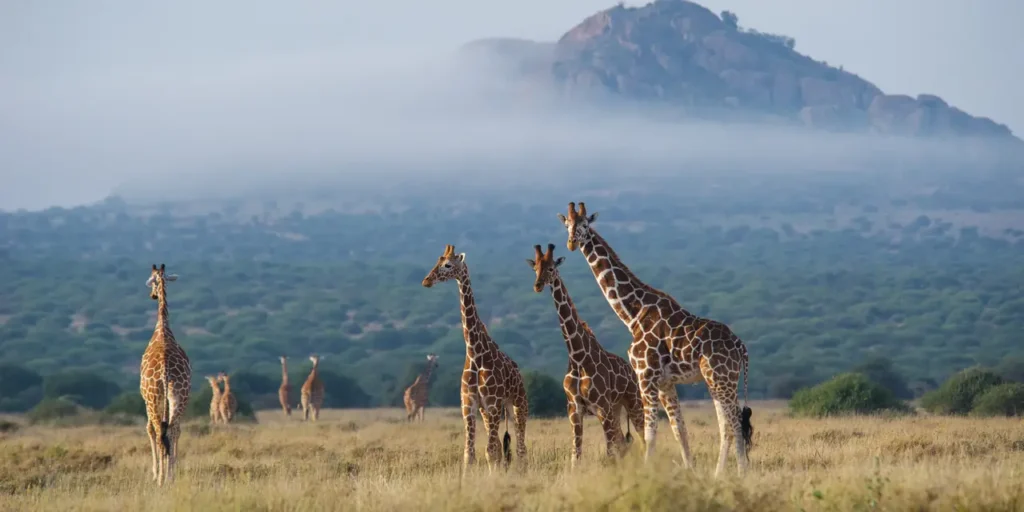
Best Places to Visit in Kenya
Now that you know the differences between national parks, national reserves and conservancies, here are some of the most popular ones you might want to visit on your safari holiday in Kenya.
1. Maasai Mara National Reserve
Maasai Mara National Reserve is arguably the most celebrated National Park in the world. Spanning some 1,500 square kilometres, the reserve lies in the southwest of Kenya.
It shares a border with the Serengeti National Park in Tanzania (basically it is the same game park, just divided between the two countries). The ‘Mara’, as it is nicknamed, is an attractive green landscape, with expansive grasslands and volcanic hills, traversed by the Mara River.
It is hosts a dizzying number of African animals and birds and offers sensational wildlife encounters, with a high concentration of big cats – lions, leopards and cheetahs.
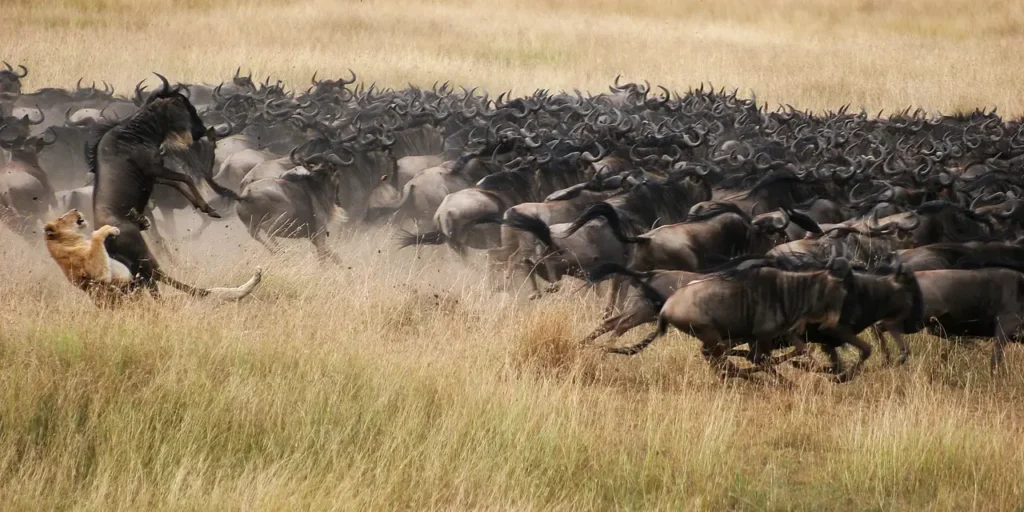
Then of course, there is the big-ticket draw: the annual Great Migration that sees almost two million wildebeest, plus half a million antelopes and thousands of zebras, following the rains around Kenya and Tanzania. The most anticipated part of this journey is the dramatic Mara River crossings that occur between July and October as the animals enter Kenya.
While I don’t want to tell you what to do, it has to be said that most people consider the Maasai Mara National Reserve an essential stop on any first-time wildlife safari to Africa.
2. The Mara Conservancies
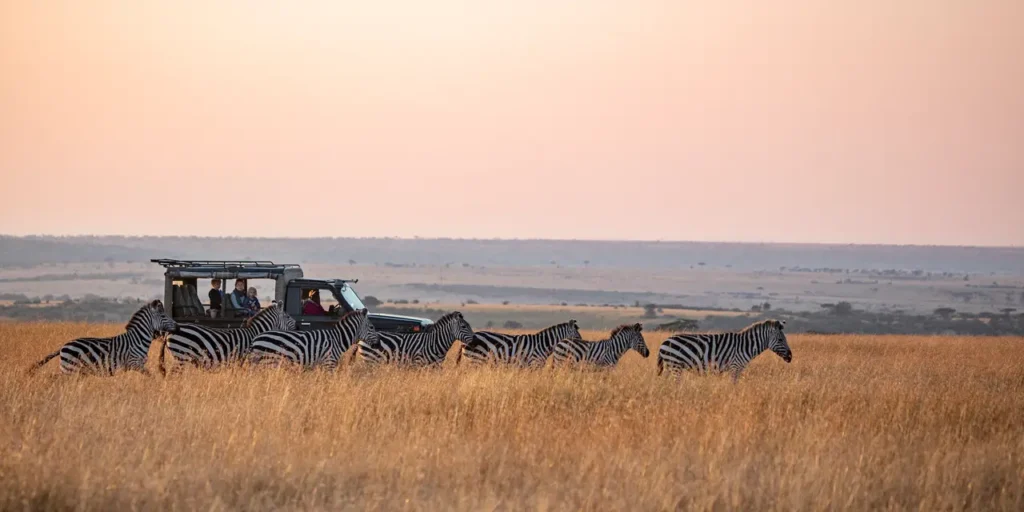
Around the edge of the Maasai Mara National Reserve, you have the Mara Conservancies or private concessions. This is community-managed land which shares boundaries with the national reserve. There are typically no fences, so the animals are free to come and go.
This means that you can see the same wildlife but without the restrictions you get in the Masai Mara National Reserve. The most popular conservancies include Naboisho, Mara North, Olare Motorogi and Olderkesi. Staying in conservancies lets you escape the crowds as they not accessible to day-trippers.
Also those not staying in one of the conservancies’ tented camps or lodges will not have the advantage of enjoying activities not permitted in the national reserve such as bush walks and night drives. Staying in conservancies is also offer a chance to give back to local communities and engage with them on cultural visits.
I strongly recommend including a conservancy as part of your Kenya itinerary if you can.
3. Ambroseli National Park
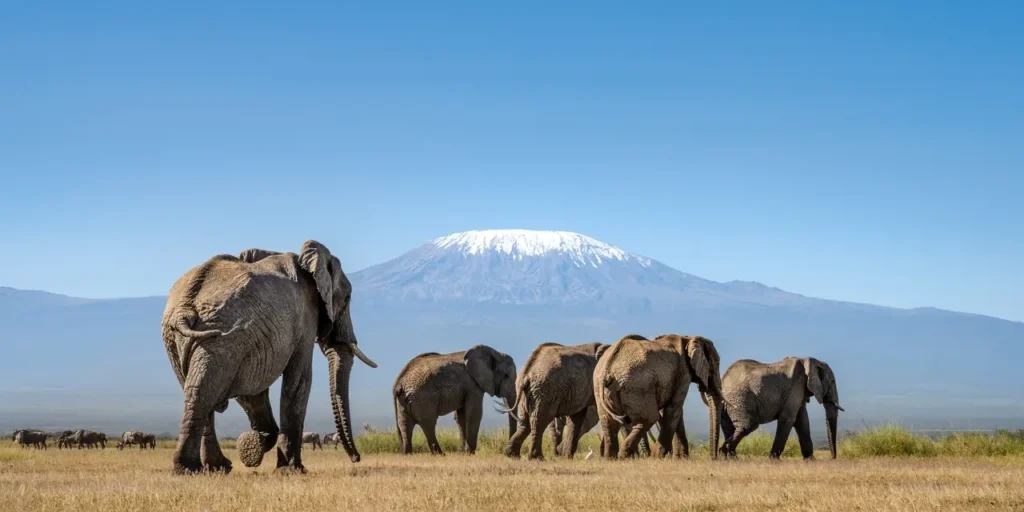
Possibly, you have seen the iconic images of Kenya, featuring African bush elephants standing on a green savanna plain with mighty, snow-capped Mount Kilimanjaro behind.
Those photos are all shot in Ambroseli National Park which is located few kilometers south of Nairobi. This Kenya Safaris Park is situated about 30 miles from Africa’s tallest mountain (which is actually in Tanzania). As well as its dramatic scenery, Ambroseli National Park is well-known for its healthy elephant population, many with giant tusks.
Then there are the park’s lions, hyenas, cheetahs, buffalo, giraffes, zebras, pelicans, martial eagles, blue-cheeked bee-eaters – and much more. Amboseli is the second most popular wildlife safari destination in Kenya after the Maasai Mara National Reserve. If you can manage to fit them both in on your Kenya safari adventure, you are onto a winner!
4. Laikipia
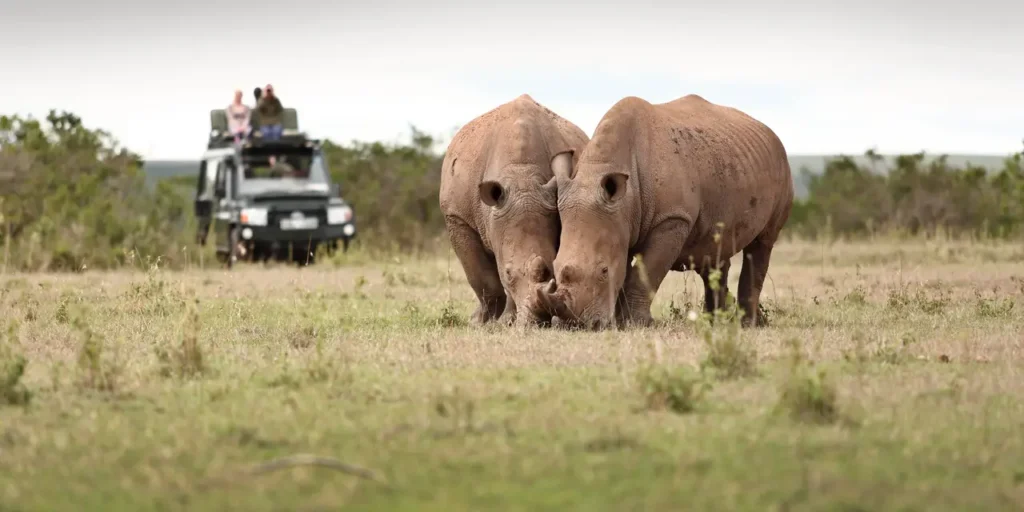
The Laikipia (‘treeless plain’ in Maa) is very beautiful region that is located approximately 250km north-west of Nairobi in the shadow of the snow-capped Mount Kenya, the second tallest mountain in Africa. Most of the area lies at altitudes over 1,500m, so, despite lying across the Equator, the climate is moderately cool and temperate. Besides Mukogodo and Rumuruti Forest Reserves, none of Laikipia’s many wildlife areas is a game reserve or national park.
Instead, the guardianship of the wilderness is based on the Kenyan conservancy model. Here, there is a network of smaller conservancies, many of which are former cattle ranches which were taken over and converted into wildlife conservancies. Much less visited than the Mara, Laikipia Plateau has become something of a poster-child for conservation and community engagement.
Conservancies work very hard to support a sustainable balance between tourism and local livelihoods, and conservation efforts are doing well.
Ol Pejeta Conservancy, for example, is now home to over 200 rhinos including the last 2 northern white rhinos on Earth, vigilantly guarded day and night. Also, the Sweetwaters Chimpanzee Sanctuary in Ol Pejeta is the only place in Kenya where visitors can see chimpanzees – our closest genetic ancestors – as they do not occur naturally.
5. Aberdare National Park
Aberdare National Park is situated in the cool highlands along Africa’s Great Rift Valley near the Laikipia region. It is one of the most beautiful places to visit in Kenya.
Not only is it a verdant mountainous region of valley, rivers, waterfalls, and forests, it is also home to extremely rare African animals such as the black serval, the black leopard and the eastern bongo, Africa’s most elusive antelope. This is the place where Queen Elizabeth II heard of her father’s death, making her Queen of England; Treetops Hotel, where she was staying at the time, has since become a popular place for travelers to visit.
6. Mount Kenya National Park
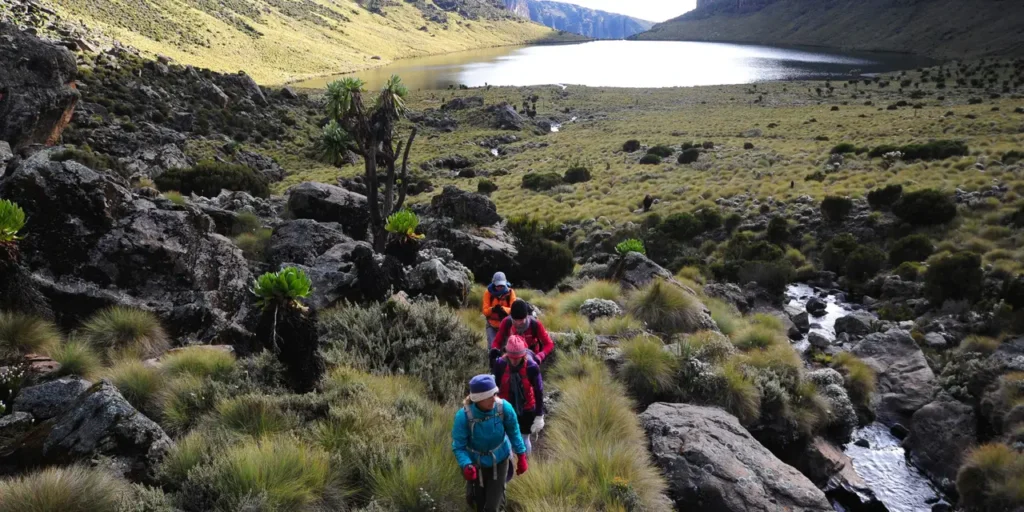
At 5,199 meters above sea level, Kenya’s tallest mountain is also the second highest in Africa after Mount Kilimanjaro across the border in Tanzania.
The strato-volcano was formed reated around 3 million years ago when the Great Rift Valley opened up. Today its lower slopes are blanketed in forests of bamboo and African rosewood trees and the mountain runoff offer water for over 2 million people.
With its rugged snow-capped peaks and glaciers along the upper slopes, Mount Kenya is one of the most beautiful places to visit in Kenya.
Visitors interested in summiting can either trek to Point Lenana, one of the 3 peaks, taking the world’s highest via ferrata (iron way) route, or climb to the highest point, Batian Peak, though this requires experience of technical mountain climbing.
7. Samburu Region and National Reserve
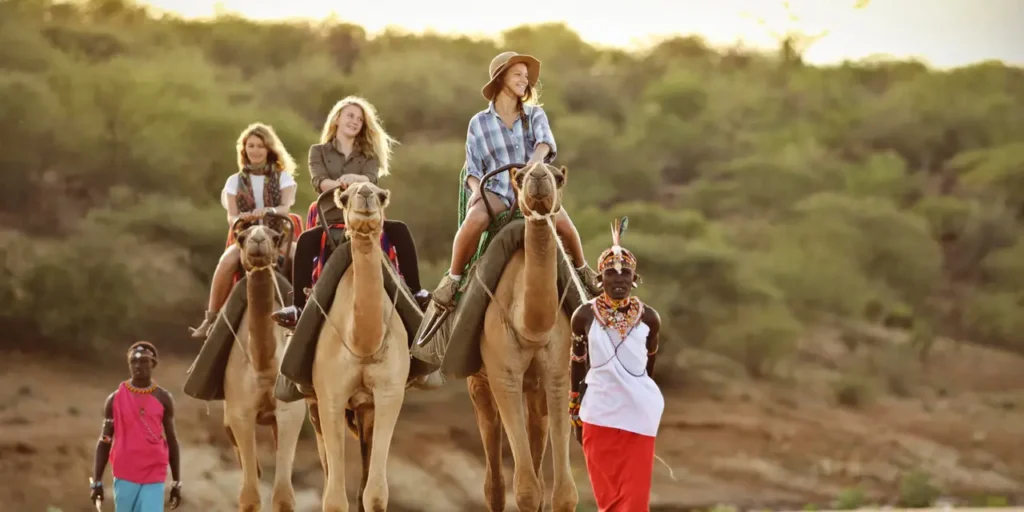
Samburu region in northern park of the country is considered one of the best places to visit in Kenya. The region is home to the 165 km2 Samburu National Reserve.
The reserve was created in 1985 and is situated on the banks of the Ewaso Ng’iro River, along whose banks both big game and vegetation flourish. The river runs through the park and is its heartbeat; without its precious water the animals would not survive in the park’s otherwise semi-arid environment that is dotted with termite skyscrapers.
The Samburu region is also home to the Samburu people, famed for their many strands of brightly colored beaded jewelry. Within the reserve you will find elephants, lions, leopards and cheetahs, spotted hyena, hippos, Gazelles, Impalas, Rhinos, plus over 450 species of birds.
Of special interest is a few rare and localised species like the reticulated subspecies of Giraffe, the ultra-striped Grevy’s Zebra, regal Beisa Oryx and long-necked Gerenuk. These four together with the blue-legged Somali Ostrich make up the so-called “Samburu Special 5”.
8. Lake Nakuru and Lake Naivasha
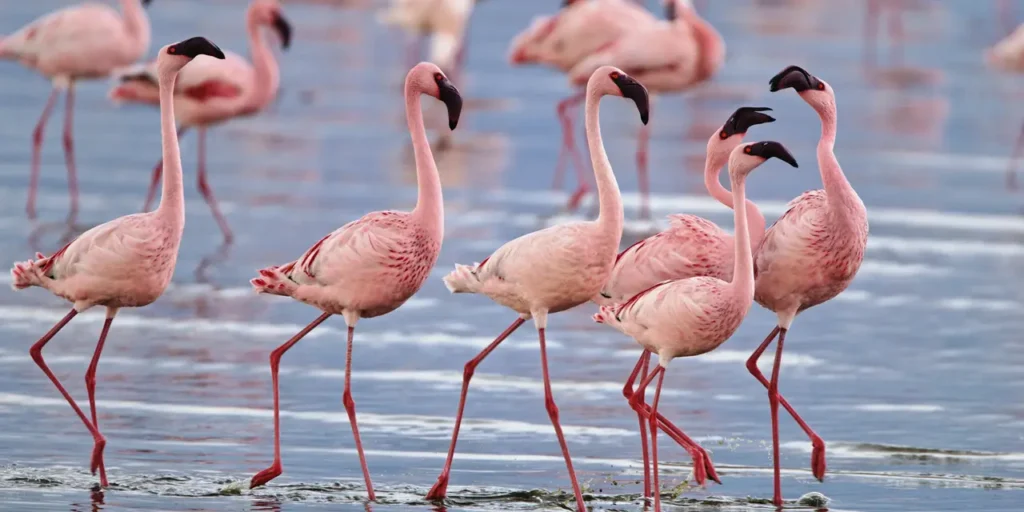
Lake Nakuru National Park and Lake Naivasha are large lakes in the Great Rift Valley area, approximated 3 to 4 hour drive northwest of Nairobi (depending on which one you visit).
Both are peaceful, beautiful, lakes, teeming with bird life including pelicans, storks, kingfishes, ibises, and huge flocks of dazzling pink flamingos.
Whereas Lake Nakuru National Park is more popular and is also home to high concentrations of African animals including black rhinos, white rhinos, giraffes, lions, leopards, zebras and hippos, Lake Naivasha is quieter and great for relaxation in stunning surroundings. But since they are only an hour apart, it is easy enough to visit them both on your Kenya safari holiday.
9. Nairobi National Park
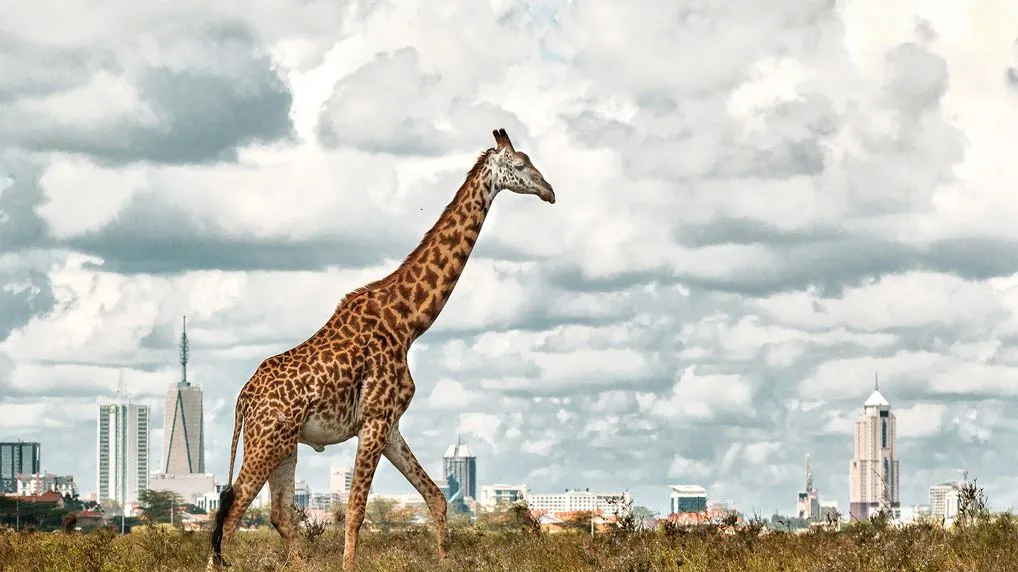
In fact, you don’t actually need to move very far at all to see Kenya’s wildlife. The capital city Nairobi has its own National Park (Nairobi National Park) right on the doorstep.
It is not an expansive wilderness like any other parks I have mentioned, but it is extremely accessible, and a great chance to take photos of lions, giraffes and rhinos with a backdrop of the city skyline. If you are spending a day in Nairobi city at the start of your Kenya safari, this could be a cool place to have your first taster of the incredible wildlife of Kenya.
10. Tsavo West And Tsavo East National Parks
Tsavo is situated in the southeast of Kenya near to Mombasa. It is divided into two– Tsavo East and Tsavo West National Parks. Combined, these two parks account for the largest of Kenya’s protected spaces by a comfortable margin (over 20,000km2) and one of the largest protected wilderness areas on the planet. This massive ecosystem lies directly between Kenya’s capital, Nairobi and the country’s main port city, Mombasa.
This location is why they were divided into Tsavo East and West – they are split by both railways and the Nairobi-Mombasa Road, which sees the movement of around 50% of goods traded in East Africa. Both parks are known for their vivid orange soil, dramatic volcanic hills, and hardy wildlife including the iconic ‘red elephants’ and maneless lions, the descendants of the legendary man-eaters of Tsavo.
While the Maasai Mara National Reserve is greener and busier, Tsavo is drier and more raw – a very different and possibly more adventurous wilderness experience.
It does not have the intense, overwhelming abundance of big game that you can see in the Mara, but there is still plenty of wildlife, including the rare wild dogs, the long-necked gerenuk, the lesser kudu, fringe-eared Oryx and many hundreds of bird species.
11. Diani Beach - Mombasa
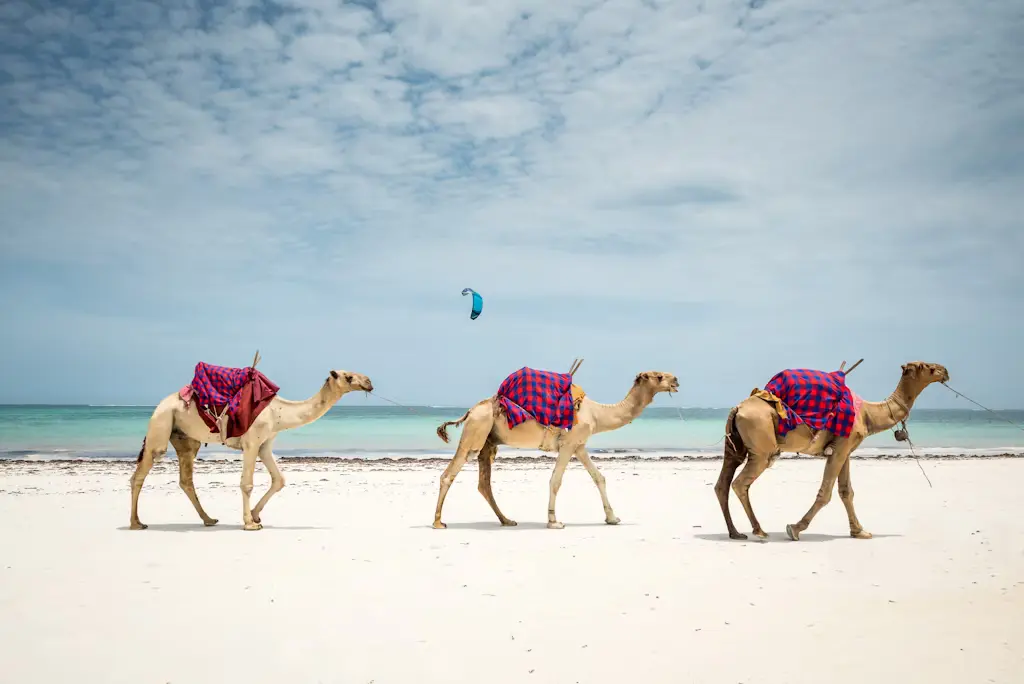
As well as buckling under the weight of its wildlife, Kenya also has some of the best beaches in Africa: long strips of perfect white sand coupled with the warm, turquoise waters of the Indian Ocean. For this reason, many people choose to combine their Kenya safari with a few leisurely days on the beach, and Diani is the most popular place to do that.
With 10 mile stretch of beach and spectacular coral reefs, Dian Beach is one of the most picturesque shores in Africa. The beach is about 30km south of Mombasa and a short flight from Nairobi. Its white sands are lapped by the brilliant Indian Ocean and backed by verdant forests, into which you can take nature walks when you tire of sunbathing or kite-surfing.
You can also take a snorkeling trip, swim with whale sharks, enjoy a sunset dhow cruise – or simply kick back in a hammock with a good book. There is also a huge range of luxury resorts, boutique hotels and budget accommodation to choose from.
12. Lamu Archipelago
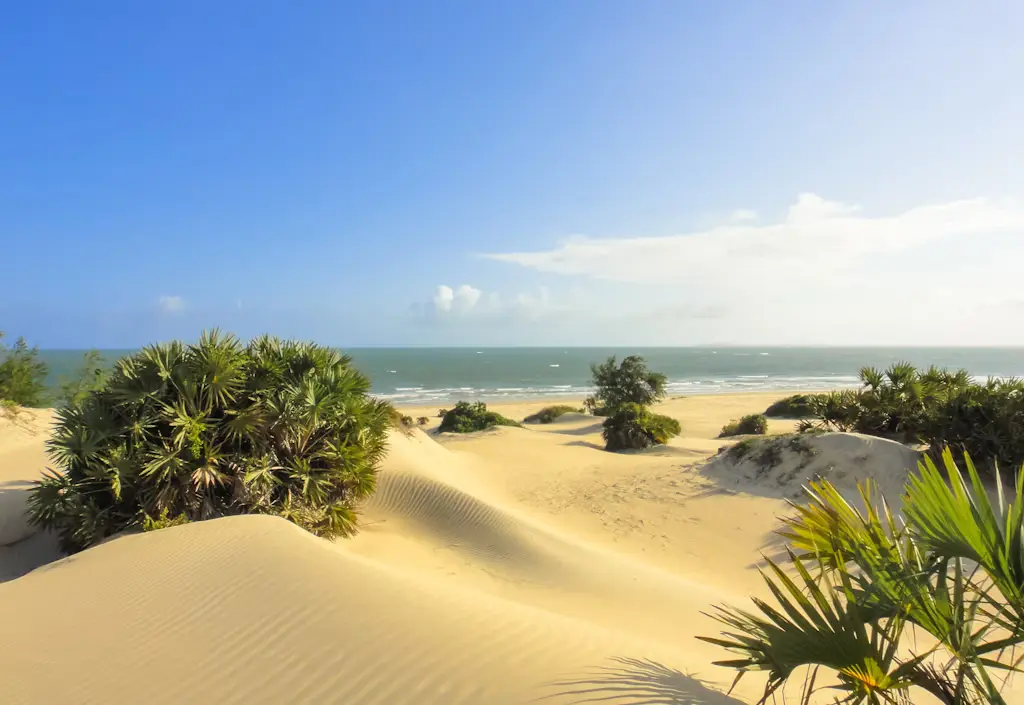
If you are looking for a laid-back holiday destination with gorgeous beaches in Kenya, the Lamu archipelago is the place to visit. History fans should head to ancient town of Lamu.
As the oldest Swahili settlement along the coastline of East Africa, everything in Lamu Town from the architecture to the food is storied. The town streets are so narrow that it is inaccessible by car. Donkeys or walking were once the only mode of transport, but in recent years, motorbike taxis called boda-boda have changed the vibe of the town, whirring through the corridors.
Take a speedboat to explore other spots across the archipelago such as Kiwayu Island – an ideal spot for sport fishing and scuba diving.
Visit Shela village and relax at one of the holiday homes which features infinity pools that gaze out to the Indian Ocean. An evening sunset dhow cruise is a must.
The island has many great restaurants, such as those at Kijani Hotel and Peponi Hotel, or has a drink at the Floating Bar. As you plan your visit here, please note that the clothing that covers shoulders and chests is expected; Lamu is a largely Muslim town.
Want To Visit Kenya?
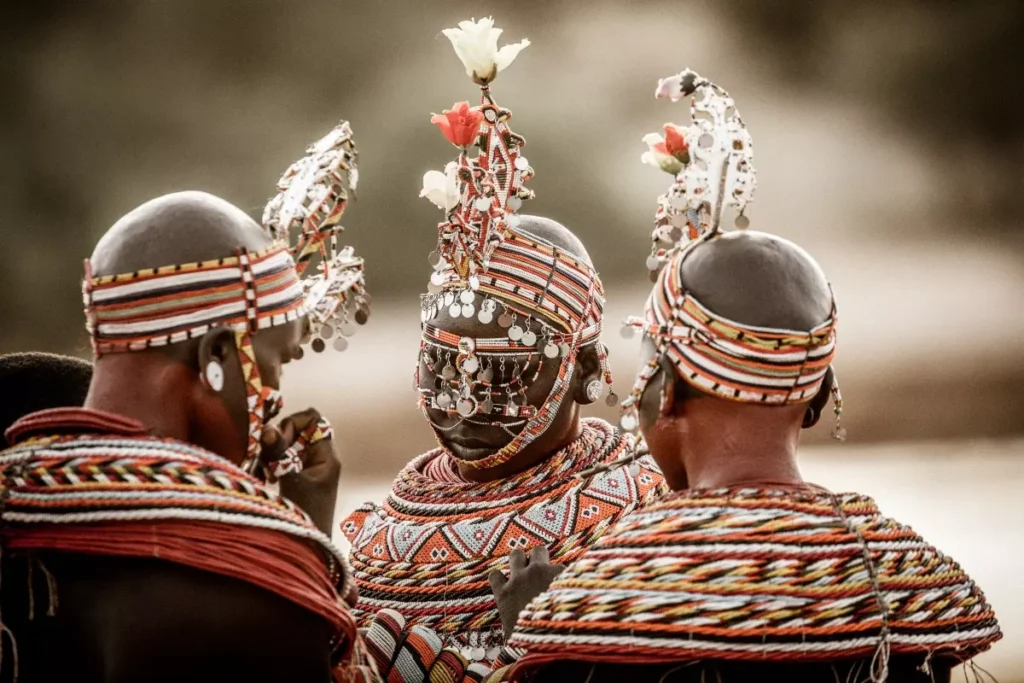
Click on the button below to see our suggested Kenya safaris and holiday packages or you can contact for customized itinerary.
